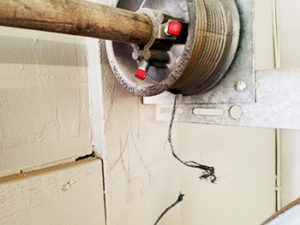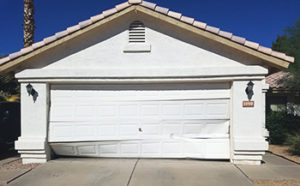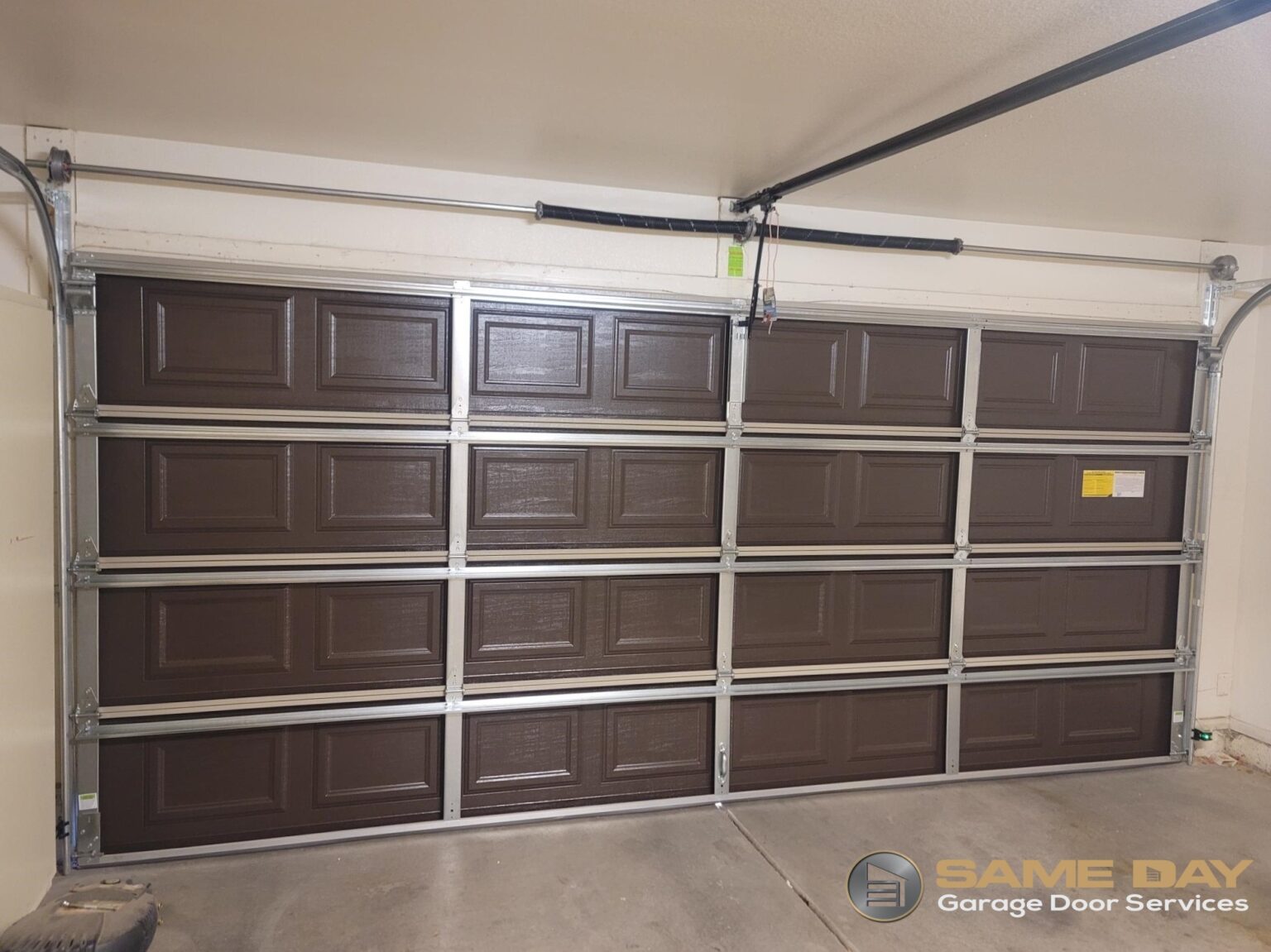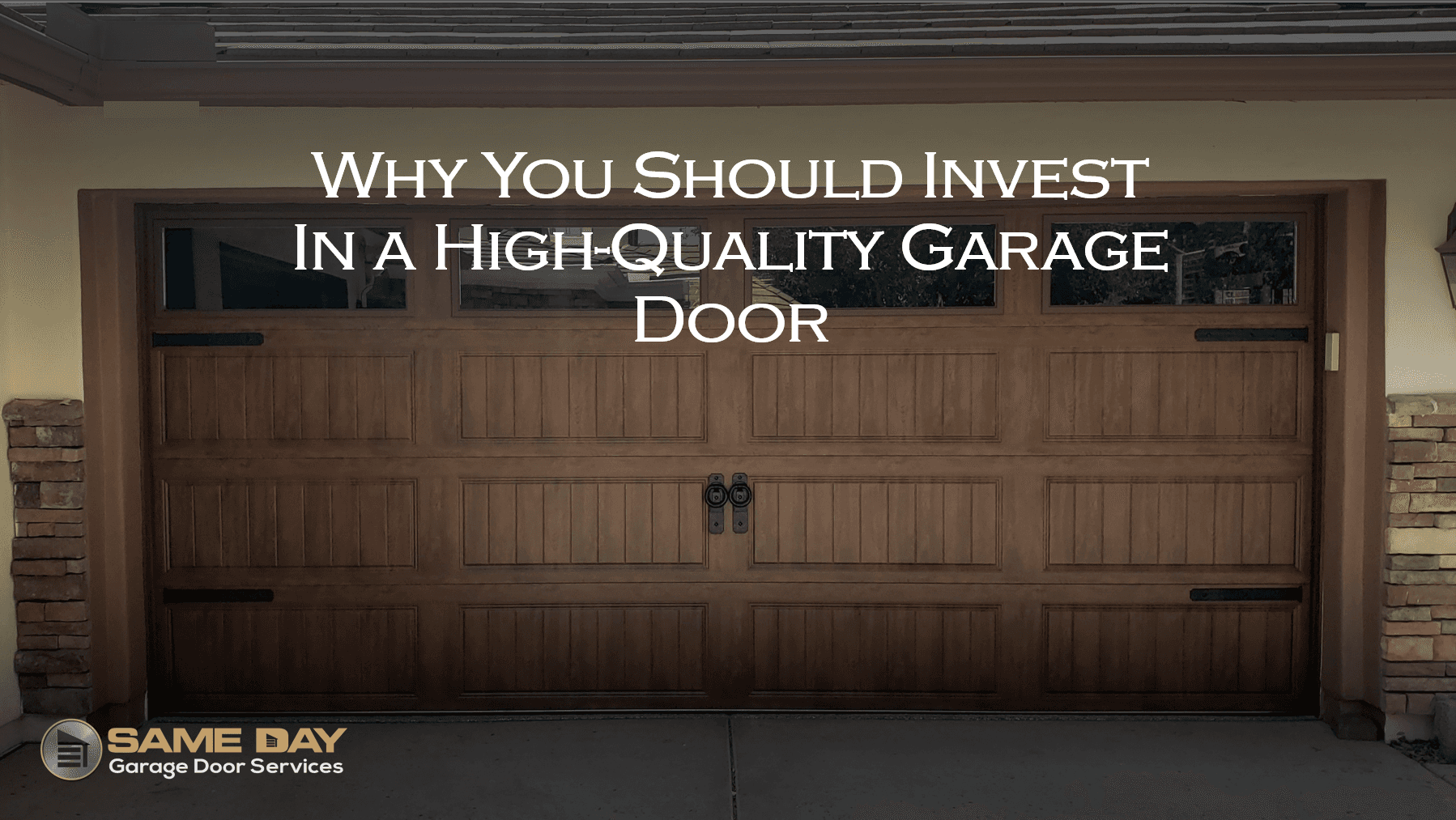Blog
Repair
Why Isn't My Garage Door Closing All The Way?

We will explore some different causes for why your garage door won't close, and what you can try to resolve the issue.
Have you ever had your garage door start to close, but stop halfway and retract up again?
Frustrating. Isn't it?
The garage door on your home serves one main purpose, and when it fails to perform this task, it can be incredibly frustrating! For it to perform properly, all parts need to be in working order and the garage door itself needs to be free to move as it is intended to.
Sometimes the solution can be as simple as re-aligning the sensors or moving a rake out of the line of sight. However, there can be more complicated symptoms that prove to be more difficult to diagnose.
But what could cause this?
Reasons Your Garage Door Won’t Close All The Way
1. Safety Sensor Malfunction
This is probably the most common culprit when a garage door won’t close all the way. Your safety sensors could simply be malfunctioning. There are two sensors that sit near the bottom of the garage door, just about six inches or lower above the ground. These sensors emit a signal between them which is used to determine if anything in the way of the garage door closing.
Several factors can cause one or both of these sensors to fail, for example, one or both sensors are not receiving power, or the sensors are not emitting their signal properly. Even though this is a great built-in safety feature, when there really isn’t anything in the way, it can be incredibly annoying (especially when you're late for work!).
If you can determine that this is, in fact, what is happening, you can purchase a new set of sensors and replace them yourself, as it can be a very simple garage door repair to do.
2. Something In The Way
Sometimes, the most obvious cause can be overlooked. The first thing you should check if your garage door isn’t closing properly is that everything is cleared of the door’s path.
Check around the floor, and even in the tracks, to see if you can determine if the garage door is being hindered by any objects in its path.
One too many times an empty box has been the culprit!
3. Sensors Not Aligned
Sometimes, the safety sensors are working just fine, but their alignment with one another is the cause of the malfunction. Sometimes, a good bump on one of the sensors can cause the signal to become misaligned.
If the sensors aren’t talking to each other, they’re essentially telling the garage door that there is something in the way all the time. It’s a fairly easy problem to check for.
Most safety sensors will have one of the lights when they are misaligned, whereas the light is on and steady when they are talking to each other correctly. Check to see if you can move those sensors into alignment again if you see the blinking lights.
Most major brands will have a different color on each of the sensors, most commonly a green with either a red, or an amber color.
4. Cables Damaged
Most garage doors rely on cables to complete the task of lowering the door.
If there is any damage or wear to these cables, they may not be able to perform their tasks completely.
For example, if there is fraying on the cable, it could catch somewhere in the system and keep the cable from completing its full range of motion.
Sometimes, the damage can be very easily spotted, but other times, damage that results in a malfunctioning garage door can be a bit harder to notice.
Again, regular garage door maintenance should include inspections of your cables as well as the springs.

5. Door Travel Distance Setting
Most garage door openers have a default setting, telling the garage door how far to close. It can sometimes be improperly set during garage door installation, or even slowly drift from the original setting over time.
If your setting it too high, the garage door won’t close all the way, but if the setting is too low, your garage door will act as though it has hit an object, bounce back up, even though it was just the floor!
Whatever the reason, you will need to adjust the setting to meet the requirements for your specific garage opening.
Most models offer an adjustment using buttons with a digital setting, or older models with knobs on the opener itself. If you’re unsure how to adjust this setting, you can search your model online for instruction, or give us a call to help out.
6. Tracks Are Damaged
The tracks that the garage door wheels roll in, guide the door to and from its open and closed positions.
If the track is bent or warped, or has some other sort of damage, that can prevent the door from opening and closing correctly.
Make sure to check for damage, and check for anything that could be stuck in the tracks, creating a blockage. Quite often removing the blockage can fix the problem, but be sure to not pinch your fingers!
7. Damaged or Broken Sections

Another thing that can keep your garage door from working properly is damaged or broken sections. If the sections are split or dented, it could hinder your door from opening and closing. If it’s just a matter of replacing one or two sections, you should do so, given that the manufacturer still makes that type of garage door. Any more than that could mean an entire garage door replacement. There is also the chance that just replacing the damaged sections won’t fix the problem altogether. There could be a bigger problem with your garage door’s functionality. Talk to your local garage door repair man today to go over your solutions.
Sometimes, the garage door or the garage door opener, or both, have served their purpose and are in need of replacement.
We can help you!
The harsh elements in Arizona can wear on the door and the mechanisms in the opener over time, causing the need for a complete garage door replacement.
Whether you are in the market for a new garage door, or are simply looking for a professional to fix the garage door you have, we would appreciate the opportunity to work with you. If you have questions about a garage door that won’t close all the way, or are curious about replacing your existing garage door and/or opener, please contact
Same Day Garage Door Services at 480-750-7975.
Same Day Garage Door Services, LLC
Email: samedaygaragedoorservices@gmail.com
ROC #308754
Gilbert Location
1176 East Warner Road #117
Gilbert, AZ 85296
Phone: 480-573-2359
Tempe Location
5861 S Kyrene Rd Suite 1
Tempe, AZ 85283
Phone: 480-750-7975
T
Repair
Trevor Leisek
Marketing Manager





